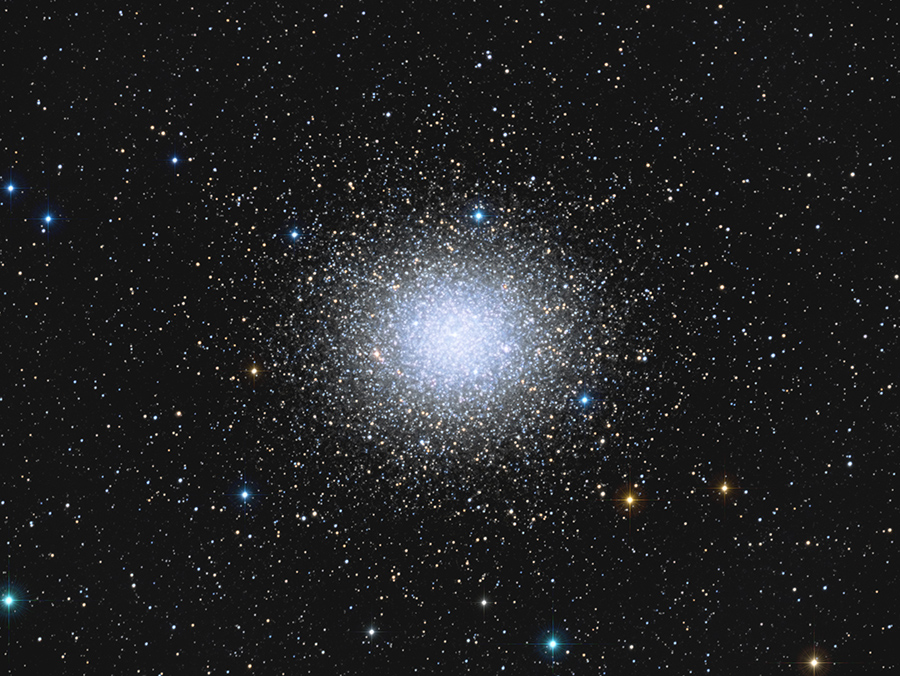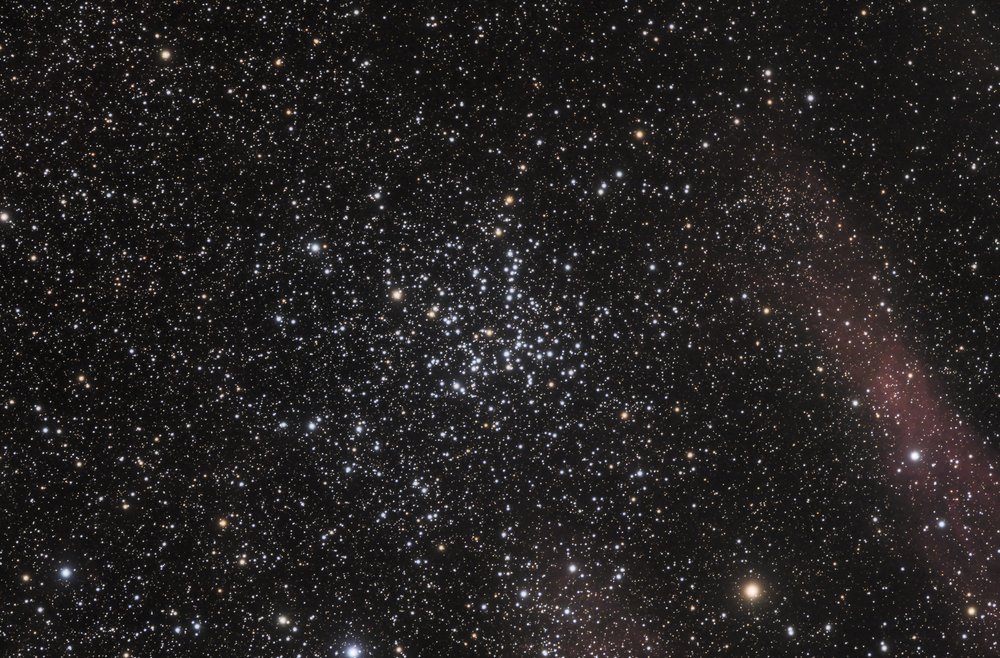Omega Centauri

Omega Centauri (ω Cen or NGC 5139) is a globular cluster in the constellation of Centaurus that was first identified as a non-stellar object by Edmond Halley in 1677. Located at a distance of 15,800 light-years (4,850 pc), it is the largest globular cluster in the Milky Way at a diameter of roughly 150 light-years.[10] It is estimated to contain approximately 10 million stars and a total mass equivalent to 4 million solar masses,[11] making it the most massive globular cluster of the Milky Way.
Omega Centauri is so distinctive from the other galactic globular clusters that it is thought to have an alternate origin as the core remnant of a disrupted dwarf galaxy.[12]
It has been speculated that Omega Centauri may be the core of a dwarf galaxy that was disrupted and absorbed by the Milky Way.[24] Indeed, Kapteyn's Star, which is currently only 13 light years away, is thought to originate from Omega Centauri.[25] Omega Centauri's chemistry and motion in the Milky Way are also consistent with this picture.[16] Like Mayall II, Omega Centauri has a range of metallicities and stellar ages that suggests that it did not all form at once (as globular clusters are thought to form) and may in fact be the remainder of the core of a smaller galaxy long since incorporated into the Milky Way.[26]
Omega Centauri is mostly a Southern Hemisphere object that Southern parts of the northern hemisphere can see during certain times of the year. The cluster at transit was only at 14 degrees altitude so its a very low object in the sky.
Location: Kissimmee Prairie State Preserve
Scope: Stellarvue 130
Camera: FLI ML8300
Mount: Orion Atlas Pro
1.5 hours Lum 300 sec binned1
20 min each RGB 120 sec binned 2
Date: 4/29/19
Processed in Pixinsight and post process in Photoshop.









